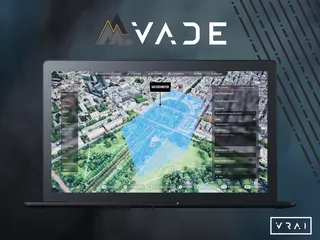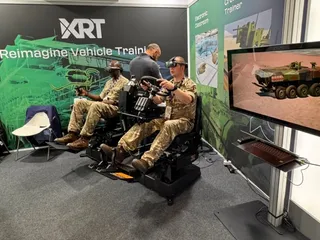Relax, Observe, Confirm
Contact Our Team
For more information about how Halldale can add value to your marketing and promotional campaigns or to discuss event exhibitor and sponsorship opportunities, contact our team to find out more
The Americas -
holly.foster@halldale.com
Rest of World -
jeremy@halldale.com

The use of focused training to mitigate Startle and Surprise was examined in a study by the NLR – Netherlands Aerospace Centre and KLM. Julie Boatman Filucci examines the study and its results.
Boom! We prepare through training for emergencies like engine failures, wake turbulence, smoke in the cockpit - the relatively expected surprises that in the normal course of initial or recurrent training have become the meat of it - to the point where these events are not surprises at all. Perhaps we’ve lulled ourselves into believing that we can inoculate our flight crews against disaster by rehearsing these scenarios over and over.
Until that next truly unexpected event: Like an uncontained engine failure and blade separation while passing through 32,500 feet on climbout - as experienced so recently by the crew of Southwest Airlines Flight 1380. We can bet that the pilot and co-pilot had practiced the sequence for managing a failed engine many hundreds of times in the simulator. But when was that failure accompanied by shrapnel piercing a cabin window, and the subsequent decompression partially pulling the deeply unfortunate passenger halfway through the broken frame?
“We all want to be the captain from Southwest [1380],” said Edzard Boland, of the NLR - Netherlands Aerospace Centre in Amsterdam. But without succumbing to the idea that only those with “the right stuff” need apply, how does a pilot gain this ability to remain steady under pressure? How do you train so that you have the potential to be that calm, collected, professional pilot?
In 2016, EASA launched an initiative to look at the effect of specific training on a pilot’s ability to manage unexpected events, so called “Startle and Surprise” for a crewmember’s immediate reaction to them. The NLR - Netherlands Aerospace Centre joined forces with airline partner KLM to provide EASA with a study that examined the use of focused training on mitigating Startle and Surprise.
Boland was a key part of the team conducting the research, and he lays out the definition of Startle and Surprise thus: A startle is an intense, sudden stimulus, such as a noise (bang!), visuals (flash!), or a sensation (shock!). The surprise happens when reality does not meet your expectations, to put it dryly. “Startle and Surprise” within the commercial pilot context becomes this: Inappropriate reactions to unexpected events in the cockpit that can lead to destabilization of the airplane and flawed decision making. The phenomena happen across all skill levels and certifications, and in all categories and classes of aircraft.
The impetus behind the study for EASA stemmed from a number of incidents and accidents in the preceding decade in which the crew did not handle the unexpected well. A handful come to mind readily: Comair Flight 5191, in Lexington, Kentucky, when the crew attempted a takeoff on the wrong runway. Air France Flight 447, over the Atlantic Ocean, that entered a stall from which the flight crew did not recover. American Flight 587, on departure from JFK Airport in New York, in which the first officer aggressively responded to an encounter with wake turbulence resulting in the separation of the vertical stabilizer from the airplane.
In each of these accidents, there were many contributing factors, but a consistent theme lies in the crew’s ability to manage a stressful event with resilience. Though a part of the EASA study’s focus initially revolved around these and similar Loss of Control In-Flight (LOC-I) accidents, it was not meant to cover only those events. In fact, one key result determined that the training developed had application in virtually all segments of flight - and not just by the folks in the cockpit.
The Crux
At their most benign, startle events act as distractions; at their worst, they contribute to the accident chain. Startle events prompt the pilot to discard learned procedures and their methodical execution, and substitute an immediate set of actions--the first thing that comes to mind, whether it’s appropriate to the situation or not.
While decision-making plans and mnemonics provide some support and are typically taught from ab initio training onward, they do not solve the issue, as these processes too often get thrown out in the reaction to the startle event. Instead, the researchers sought a method that pilots could use to train themselves for a proper mental state, ready to come into play in the event of the unexpected.
If we look at world-class athletes, we see a similar kind of mental training incorporated into their regular exercise schedule. “Roger Federer [the tennis champion] has a mental coach,” said Boland, “because he wants to be mentally the most strong, so he can deal with unexpected events.”
Beyond Fear
A large obstacle to proper use of these tools (mnemonics and decision trees) is fear, which hijacks the cognitive thought process and inserts its own actions, which are intended to extract the person from the event causing the fear. Therefore, the short-term training developed by the NLR/KLM study aimed at managing the fear and its associated emotions.
Within each of our brains we hold the remnants of what Boland calls our “chimp,” which is hard-wired to respond to a sudden, fear-inducing stimulus by either “fight or flight” - an aggressive, impulsive lashing out, or a panicked departure from the scene, or through “cognitive paralysis.” In the cockpit, “fight or flight” translates into these undesirable behaviors: impulsive control movements or other actions, hyperventilation, or other displays of panic and emotion. Cognitive paralysis normally presents itself as “brain freeze,” and the cessation of all action or decision making capability.
The training taught pilots to apply a technique intended to help them manage their emotions in any surprising situation where a bit of time is allowed prior to a response. Obviously, situations such as a near mid-air collision requires immediate, correct action - but even in these scenarios, once the “boldface” items such as maintaining flight path integrity and personal safety (i.e. oxygen use) are taken care of, the training can still come into play.
The Experiment
The initial experiment tapped 44 pilots from KLM’s long-haul (Boeing 747-400) and short-haul (Boeing 737-NG) cadres, including 22 instructor pilots. Each crew received a briefing on the suggested training, then was given time in the simulator to move through a variety of Startle and Surprise scenarios.
The training broke down into three components, tapping into a similar kind of mental conditioning used in sports and military training to prepare the mind for correct action. The three key phases? Relax - Observe - Confirm.
In the Relax phase, the participants were encouraged to initially put themselves at a distance from the problem, be it mentally or physically. Then, they paid attention to their breathing, ensuring a normal, regular respiration rate. The pilots were instructed to consciously relax their muscles, and these could be anywhere in the body where the person might hold tension - the neck and shoulders, the legs, the hands. When reaching the point at which they felt relaxed, the pilot was told to check their colleague, to help assess that person’s state.
In the Observe phase, the crew was told to call out their observations, so that the other could hear and verify them, or make additional observations. Then, interpretation of these collective observations could take place, and action proceed.
In the final phase, Confirm could be either forward looking, to determine possible actions for a future situation (through Threat and Error Management) or involve critical thinking to reflect on the outcome of the actions taken. Boland points out that the pilots who had experience in yoga or karate, or who had been trained in the military, found instant connection to similar mindfulness techniques used in those practices.
The Response
The team presented their initial findings at the European Airline Training Symposium (EATS 2017) in Berlin last fall, and noted a very positive response. Further reflection and discussion with pilots who participated confirms this. “The training was very well received,” said Captain Jeroen van Rooy, currently on KLM’s 737 fleet, and also a senior instructor and CRM trainer. “Our Head of Training was very enthusiastic to form a team and make it happen,” to tweak the training, starting with the instructor cadre at KLM first using the adapted program. The last half of 2017 saw this training take place, with excellent feedback. KLM just launched its program within the regular pilot corps on May 1.
The Startle and Surprise program fits well in addition to KLM’s regular six-month recurrent training cycle. “We utilized a portion of the sim session alongside a scheduled Line Oriented Evaluation. In this way, we have more time and focus to train on this subject, because in normal ‘recurrents,’ a lot of other stuff has to be trained,” said van Rooy. “We found that only giving [the training] as a briefing was not enough; we need the practice [of the Relax/Observe/Confirm technique] in the sim.” Boland concurs: “If you want to maximize the transfer of the technique, you need the experience.”
Van Rooy notes that the scenarios used in the pilot program go beyond LOC-I, and incorporate all manner of Surprise events, such as lightning strikes and electrical failures, as well as engine problems that are not routine. While the team have noted the focus on similar training as part of the UPRT (Upset Prevention and Recovery Training) programs underway in recurrent training in the United States, they work hard to widen the envelope. “Every time I’m with a new airline or corporate operator [in the ongoing training], I decouple it from UPRT,” said Boland.
Indeed, the training has spread beyond KLM’s ranks and throughout several airlines and other operators in the Netherlands. Both Transavia and Corendon airlines have adopted the program, as well as Flight Simulation Company (FSC). Within KLM, similar training has recently begun for cabin crew as well. “In the process of developing new training for cabin crew, it presented an excellent opportunity for Startle and Surprise training to come into play,” said van Rooy. The new course begins with a briefing followed by video presentations, then enters the cabin simulator, using scenarios such as evacuation, decompression, and fires. A debriefing follows to discuss the outcome of the exercise.
Returning to Southwest 1380, you can see immediately the application of Startle and Surprise training to the entire crew on the airplane. “New media [such as VR] can play an exciting role in this,” said van Rooy. With immersive technology creating even more realistic Startle and Surprise scenarios of infinite variety, the training can be ongoing - away from the repetition of canned emergencies, and into practice dealing with the truly unexpected. VR (virtual reality) tools currently come into play for the pilot cadre. “We use VR following the classroom briefing, and we have two scenarios in VR,” said van Rooy. They expect the cabin crew training to incorporate VR in the future.
“It’s not a trick,” said Boland. “No, it’s training, which you need like regular exercise. We’re selling the idea not as an intervention for a problem, but as a way to maximize performance.” With this practiced state of mind, a pilot or crewmember can more readily tap into their knowledge and skill set in those difficult situations.
Published in CAT issue 3/2018


